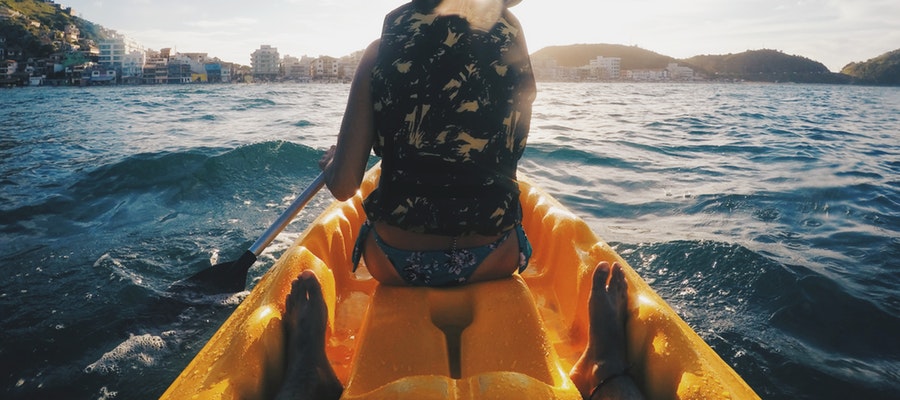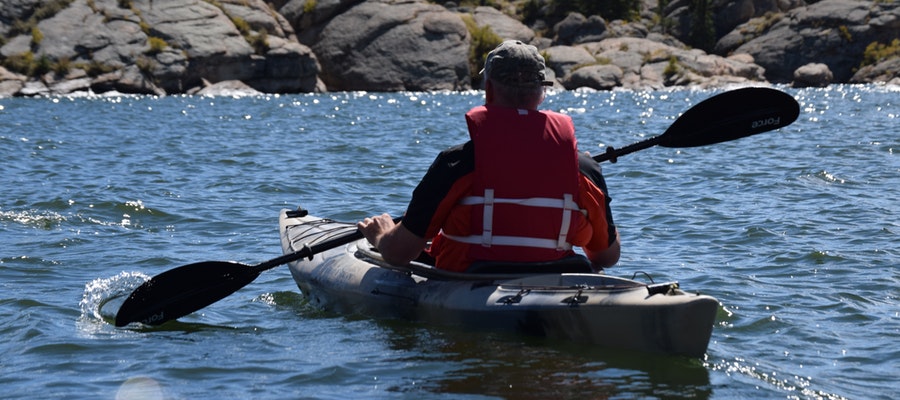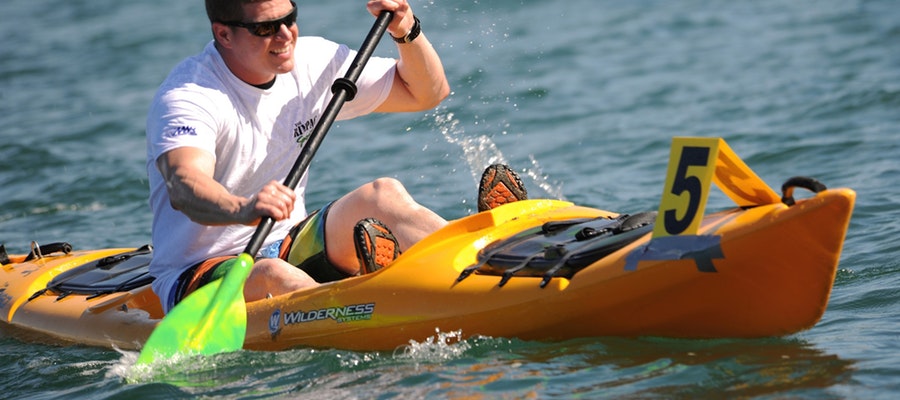Kayaking Techniques For Beginners: Kayaking Tips For First-Time Paddlers
Kayaking creates a beautiful image of outdoor exploration. The gliding movement of kayak across a glassy area of water, its wake glistening in the reflected light, and its bow knifing through the mist is a beautiful experience you will enjoy. As a beginner paddler, we have some helpful kayaking techniques for beginners that you need to get started with your kayaking.
Though buying a boat of your own might be a good option, but chances are you might not buy a ship immediately. Below are other options you can try.
- Borrow a kayak: If you have a friend who is experienced in kayaking and a good paddler, you can borrow a kayak from him. You can also learn the basics of your friend.
- Rent a kayak: You can rent a boat from a canoe outfitter, so you don’t encounter problems while transporting the boat.
- Register for a class: If you find time to sign up for a kayaking class, you will get in-depth instruction and knowledge than a tour. An introductory course is a great option to start with before embarking on your kayaking activity.
- Sign Up for Tour: When you sign up for a tour, you will get the fundamentals, gear, and boat in one package. You can contact the parks department at your local lake or an adventure-touring company.
Contents
Beginner kayaking tips for first-time Paddlers

As a beginner paddler, make things easy on yourself when planning your first non-guided kayaking outing.
- Select a small, relaxed, calm body of water: The perfect places for you should be ponds or lakes with little powerboat traffic.
- Look for a sandy beach that is sloppy to launch your kayak: As a beginner paddler, avoid going for steep, rocky, or murky shorelines, which will pose a challenge to you.
- Leave on a sunny and windless day: Maintain a high comfort and reduced complications.
- On a breezy day, begin by paddling into the wind: Paddle with a tailwind which is breezy, rather than paddling your way back, which is a struggle.
- Planning on an outing is ideal: Planning for an outing and not expedition is suitable for enjoying your experience.
Gears and Clothing You Need for Kayak

We assume you have already gotten a classic kayak that has a cockpit, a hatch, or two for stowing gear. Otherwise, your guide should put you in a large and stable boat with no cockpit if the weather and water are warm.
Basic and Essential Kayaking gear: Your canoe outfitters should provide you with the following items:
- Paddle (Ensure to check that it’s the proper size for you)
- Bilge pump
- Approved Coastguard. PFD (Personal Flotation Device)
- Spray skirt (This item is optional. Ideal on warm, calm days.)
Proper Clothing for an outing:
For warm weather and warm water, you should bring the following:
- Swimwear (Non-cotton and nonbinding shorts are okay)
- Rash guard top (Either short-sleeve or long-sleeve non-cotton top)
- Sun shielding hat
- Neoprene footwear
- A wet suit (if conditions are colder than 60F in water)
- Rain jacket, spray jacket and pants
- A vest or Lightweight fleece jacket
Essential Personal Items:
- Bring plenty of water
- For more extended tours, snacks are better
- Sunglasses, lip balm, and Sunscreen
- Watch
- Headlamp (To keep you visible to other paddlers in case you are slowly getting back)
Personal items: If you know your Ten Essentials, then many of these should be familiar:
- Plenty of water PSA
- Snacks for energy, plus lunch for more extended tours
- Sunscreen, lip balm, and sunglasses (with a retainer)
- First-aid kit
- Signal whistle
- You need a watch (so you can give yourself plenty of time to get back)
- Get one headlamp (in case you’re too slow getting back)
- Some dry bags to put things that might get wet
Kayaking techniques for beginners
The following are kayaking techniques that you need for a smooth and comfortable paddle.
- Ensure that you know how to adjust your kayak because a kayak that is appropriately aligned will be more comfortable and stable to paddle. It is recommended that you do make adjustments while the boat is still on dry land.
- If your boat is comfortable for you to adjust the angle of the seatback, sit upright by snuggling your butt against the seat.
- Adjust your bent knees in a way that they should be in contact with each side of the cockpit so they can be easier for you to get out when you capsize.
How do I launch a Kayak?
- As a beginner paddler, we recommend that you launch your boat from a sloped shoreline. If you are on a rocky or sandy surface, avoid dragging the hull.
- If your kayak is very long, try a parallel launch, but for a perpendicular start, make sure that the bow faces away from the shore.
- Straddling the cockpit and standing over the kayak is ideal when paddling.
- Set your butt down on the seat of the boat, lift your legs and slide them into the cockpit
- Make sure that you settle your feet on the foot pegs properly.
Hold your paddle and move your kayak against the incoming winds with it. If you have a spray kit, attach one.
Types of Kayaking Strokes
You must know the different kinds of kayaking strokes. These are:
- Forward Stroke: As you wind your torso, plunge your blade side of the boat next to your feet.
- Reverse Stroke: This works like the opposite of the forward stroke You do this by immersing the blade next to your hip, push with your lower hand and slice the edge out of the water when it is close to your feet.
- The Sweep Stroke: This stroke is similar to a forward stroke. The difference is you have to alter the path of the blade for it to carve wider on the side of the kayak.
Kayaking Safety Precautions
It is imperative that you carry the essential kayaking clothing and gear whenever you are heading out on the water. But for safer kayaking, you should observe the following safety measures:
- Bring a friend who is experienced in kayaking with you.
- Paddle on near shore areas and avoid paddling farter from the shore.
- Do proper research of the water currents, tides and weather conditions, and avoidable places.
- Make sure to wear a wet suit in case a capsize occurs.
- Ensure that your PFD fits tight so that it won't affect your breathing.
- Remember to carry your signal whistle.
- Please don't wear a spray kit unless you can use it properly.
Plan your kayak very well. Sign up for a kayak class. Apply the instructions of this article, and your kayaking will be a memorable experience.

